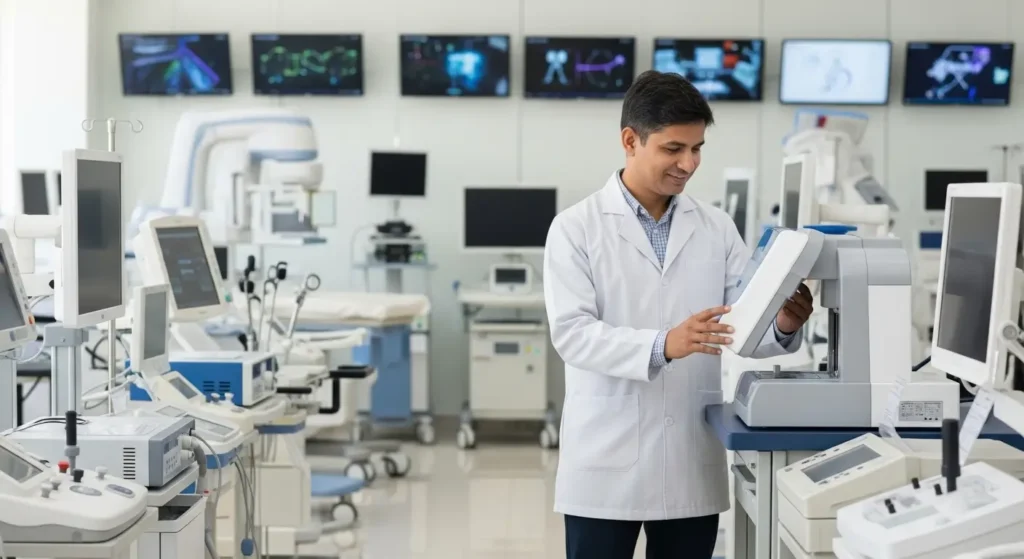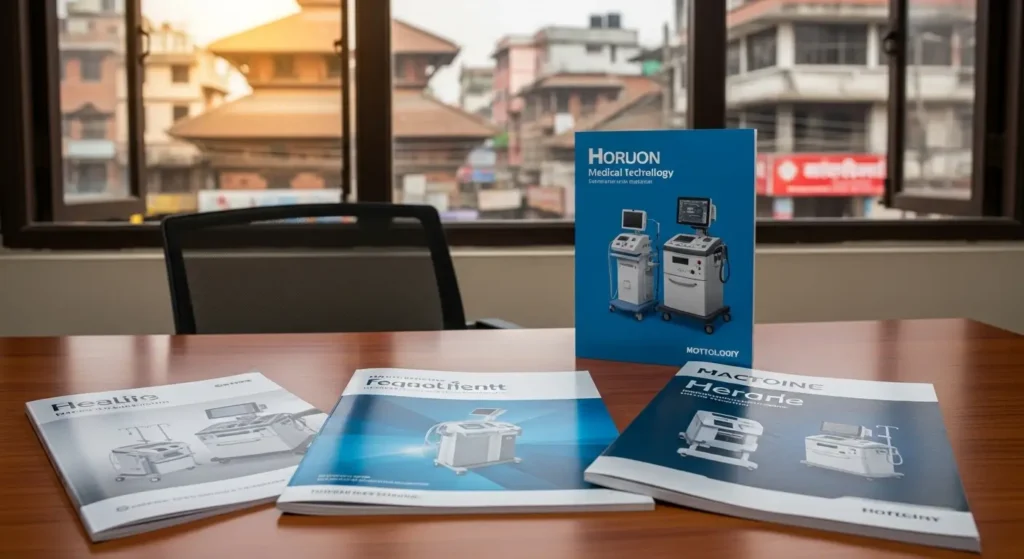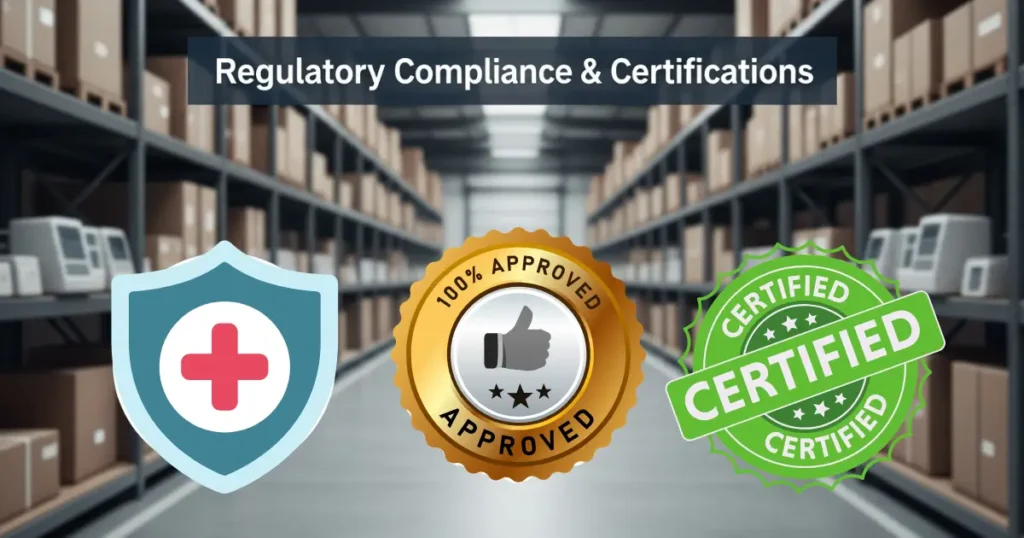Selecting the right medical testing equipment is a critical decision that can significantly impact the accuracy of test results and patient safety. Incorrect choices can lead to unreliable outcomes, potentially jeopardizing lives.
With a vast array of options available, navigating the market can be overwhelming, especially when budget constraints are a concern.
But choosing the right equipment is not as difficult as you think. You need to have a clear idea of what your clinic or lab requires and consider some essential factors, such as accuracy, cost, and regulatory compliance.
In this guide, we will explore everything you need to know – from essential features to regulatory needs. By the end, you will be able to make an informed decision about the equipment for your clinic or lab. Let’s get started!
Key Insights
- Assess Clinic or Lab Needs First
Begin by analyzing the types of tests you frequently perform, the number of patients, available space, and your staff’s level of expertise. This ensures the equipment you select is aligned with your operation’s requirements and helps avoid costly or inefficient purchases. - Prioritize Accuracy, Reliability, and Certification
Equipment should provide consistent, error-free results and adhere to recognized standards like ISO certification or local regulatory requirements (NHRC, DDA). Always verify accuracy ratings, certifications, and look for referrals from other practitioners. - Focus on Usability and Support
Choose devices with user-friendly interfaces, simple maintenance procedures, and accessible training resources. Reliable after-sales support and service contracts are crucial for minimizing downtime and operational errors. - Evaluate Cost Beyond the Initial Price
Look at total ownership cost—this includes maintenance, energy consumption, consumables, and potential financing options. Sometimes, a higher upfront investment pays off long-term with greater durability and lower running costs. - Ensure Technological Compatibility and Future-Proofing
Verify that new equipment integrates smoothly with existing EMR or LIS systems, offers automated data transfer, and can be upgraded or expanded in the future. This maintains workflow efficiency and helps your lab adapt to evolving technology.
Table of Contents
Understanding the Needs of Your Clinic or Lab
Before you buy medical testing equipment, you need to understand what your clinic or lab needs. The right equipment will ensure accurate results, increase efficiency, and keep patients safe.
Start by identifying the most frequent tests you perform. Are you working with blood work, diagnostic imaging, or microbiology? Your choice of equipment should be based on your daily tasks.
Next, consider your patient load. A small clinic may need small, basic machines, but a large lab may need large-capacity machines that can perform multiple tests at once. Think about space and storage. Do you have space for larger machines? Will your staff be comfortable with the equipment?
Also, understand your team’s expertise level. Some equipment requires special training, while others are simpler to operate. Selecting equipment that is simple to operate for your staff will save time and reduce errors.
Having a good idea regarding these factors will enable you to narrow down your choices and invest in devices perfect for your lab or clinic’s needs.
Key Features to Look for in Medical Testing Equipment

Choosing the right medical testing equipment is not all about the cost; it should also have all the essential features. The right equipment should give correct results every time, be easy to use, and have a long working life.
Let’s look at the five most important features to consider when buying testing equipment:
1. Accuracy and Reliability
Medical testing equipment must be able to provide correct and consistent results. Misreads can lead to inaccurate diagnoses and inappropriate treatments. Look for devices with a high success rate, good referrals, and certifications to ensure accuracy.
2. Ease of Use and Training
Complex equipment can slow down your operation and lead to errors. Choose equipment that is simple to use, has simple instructions, and has easy controls. If training is required, ask the manufacturer to train your staff as quickly as possible.
3. Speed and Efficiency
In a busy clinic or laboratory, time is important. Equipment that provides quicker results can improve patient care and efficiency. Look at the speed of machines and ensure they suit your requirements without compromising accuracy.
4. Durability and Maintenance
Medical equipment is a long-term investment. Choose well-made devices. Also, ask how often it has to be serviced and whether spare parts can be easily obtained.
5. Compatibility with Other Systems
Your new testing equipment should be compatible with your existing systems, such as electronic medical records (EMR) or laboratory information systems (LIS). Compatibility ensures smooth data transfer, reduces manual work and improves efficiency.
Cost Considerations
Cost is one of the principal considerations when buying medical test equipment. But it isn’t just about the initial cost. You should also consider long-term costs.
Some equipment can be cheaper to buy but more expensive to continue using because of costly maintenance, repair, or consumables. Others can be more expensive to own but save money in the long term by being durable and requiring very little maintenance.
It is also essential to compare models and brands to get the best within your budget. Look for service contracts and guarantees that cover repair and technical support. A more expensive machine with excellent after-sales support could be better than a cheaper one without support.
Remember about energy consumption too. Some equipment uses a lot of energy, increasing your electricity bill. Using energy-saving equipment will cost you less in the long run.
Lastly, consider financing. If there is a limited budget, check with the vendor or manufacturer if they offer payment plans, leasing, or renting. This way, you will be able to get the necessary equipment without having to make a huge initial down payment.
By balancing these cost factors well, you can make a wise decision that satisfies the quality, performance, and price balance.
Evaluate the Manufacturer and Vendor

Choosing a vendor and manufacturer is as important as the equipment. A well-known manufacturer provides quality, long-lasting machines that last for decades.
Look for reviews and determine how long the company has existed to assess its reputation. Experienced companies will have better quality control and customer support.
The supplier from whom you buy should be dependable and have a good customer attitude. Check if they offer warranties, maintenance, and technical support. A supplier with good customer support can help you fix issues quickly, saving you time & money.
Go around various vendors and compare their prices. However, don’t choose the cheapest option. Make sure they sell genuine products and have valid certifications. Ask for references from other labs or clinics that have purchased them.
Technological Compatibility and Integration
When choosing medical testing equipment, you must ensure that the kits work well with the technology in your lab or clinic. This equipment can enhance effectiveness, reduce errors, and save time. The following are some significant issues to consider:
1. Compatible with Your Current Software
The machine has to be operable with your electronic medical record (EMR) or lab information system (LIS). This allows automated posting of results, thus reducing the manual efforts and chances for errors. Determine whether the device will easily be used in sync with your current system.
2. Simple Data Transfer
Choose equipment that has an automatic data transfer feature. Machines with built-in connectivity can send test results directly to your system, without the need for manual data entry. Not only is this time-saving, but it also ensures more accuracy in patient records.
3. Automation and Efficiency
Some advanced medical devices can automate various tasks, such as screening samples, generating reports, or even signalling abnormal results. Automation can simplify processes, reduce the workload, and allow your staff to focus on more critical tasks, improving overall efficiency.
4. Wireless or Wired Connectivity
Consider how your equipment will link to your system. Some equipment uses Wi-Fi or Bluetooth to communicate wirelessly, offering convenience and flexibility. Others are wired, which may provide more reliable data transmission and better security. Choose the most suitable option for your clinic or lab’s infrastructure.
5. Future Upgrades and Scalability
Technology is continually changing, so it’s best to invest in equipment that can be upgraded or expanded in the future. Some machines can be upgraded with software, new features, or integration with new technologies. This keeps the equipment from becoming outdated too quickly and makes it usable in the long run.
Regulatory Compliance and Certifications

In Nepal, your medical testing equipment must meet standards and certification for safety and accuracy. The following are some key points to consider:
1. Nepal Health Research Council (NHRC) Approval
The Nepal Health Research Council or relevant health authorities must approve the medical equipment used in Nepal. This ensures that the equipment meets local health standards and is safe. So make sure the equipment you buy meets these standards.
2. Department of Drug Administration (DDA) Certification
Medical devices in Nepal are regulated by the Department of Drug Administration (DDA). Ensure that the equipment is DDA-certified so that it meets the required standards of safety and quality for use in Nepal.
3. ISO Certification
ISO (International Organization for Standardization) certification indicates that the equipment manufacturer meets global standards of quality. It is compulsory for precision and reliability in clinical testing.
4. Local Health and Safety Regulations
Make sure the equipment meets the individual health and safety legislation set by the Nepalese government. Local health and safety regulations assure safe use by patients, doctors, and medical practitioners.
Testing the Equipment Before Purchase
Before purchasing medical testing equipment, test it to check its appropriateness for your lab or clinic’s needs. Here are some essential steps to undertake:
1. Request a Demonstration
Ask the supplier to provide a hands-on demonstration of the instrument. This allows you to see how it performs in real-time, confirm its ease of use, and analyze its features.
2. Trial Period
Ask for a trial period to test the equipment in your work environment. This helps you determine how easily it fits into your day-to-day operations and whether it functions as expected.
3. Evaluate Accuracy and Performance
Perform tests with real or dummy samples on the equipment to check its accuracy and performance. The outcome should be consistent and reliable, as inaccuracies would lead to misdiagnosis or delayed patient services.
4. Check Ease of Use
The kits should be easy to use for your employees, even those with minimal technical experience. Make sure the interface is user-friendly and training is available if needed.
5. Assess Maintenance and Support
Inquire about the maintenance needs and technical support availability throughout the test. A good manufacturer or vendor should offer proper care instructions, along with a responsive support team in case of issues.
Conclusion
Choosing the right medical testing equipment is an important decision that affects the accuracy of results, productivity, and overall patient care. Go for equipment that is regulatory compliant, appropriate for your clinic’s needs, and compatible with your existing systems.
Test first and buy afterward to guarantee reliability, usability, and durability. Spending on quality equipment not only enhances the efficiency of your clinic or laboratory but also creates patient confidence.
For the best quality medical testing and reliable lab services, Bhairab Med Care Lab is the place to trust!
Frequently Asked Questions
What are the essential factors to consider when buying medical testing equipment for a clinic or lab?
Consider test requirements, accuracy, ease of use, reliability, after-sales support, and compliance with local and international standards.
How do I determine which medical testing equipment is suitable for my specific clinic or lab needs?
Assess the frequent tests performed, patient load, space constraints, and staff expertise before making a selection.
Why is certification important for medical testing equipment?
Certifications such as ISO, NHRC, and DDA ensure the equipment meets safety, quality, and regulatory standards for use in Nepal and globally.
How does medical testing equipment impact the accuracy of laboratory test results?
High-quality, certified equipment minimizes the risk of errors, providing consistent and reliable results essential for precise diagnoses.
What is the cost of ownership for medical testing equipment?
The total cost includes the initial purchase price, ongoing maintenance, consumables, repairs, and energy consumption. Consider financing and service contracts.
What maintenance is required for modern medical testing equipment?
Routine calibration, cleaning, timely replacement of parts, and following manufacturer maintenance schedules improve longevity and accuracy.
Can I integrate new medical testing equipment with my current lab information system (LIS) or electronic medical records (EMR)?
Most modern devices are designed for compatibility; always confirm with your vendor about available connectivity options before purchase.
What are the risks of using uncertified or low-quality medical testing equipment?
Device failure, inaccurate results, safety hazards, and non-compliance with health regulations can compromise patient care and clinic’s reputation.
Is training provided with the purchase of new medical testing equipment?
Reputable vendors offer user training and detailed operation manuals. Inquire about available support and refresher sessions for your staff.
Where can I find reliable medical testing equipment in Nepal?
Trusted suppliers like Bhairab Carelab Med Nepal offer a wide range of certified, high-quality testing equipment, tailored to meet your clinic or lab’s requirements.






